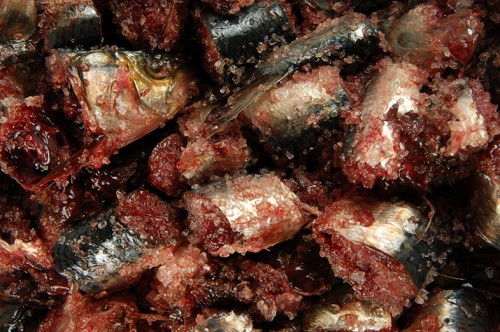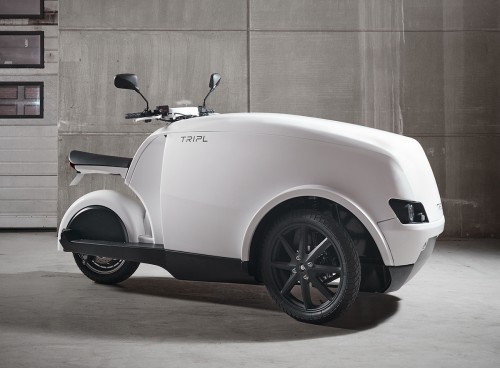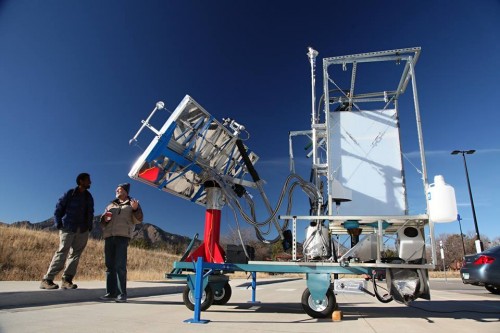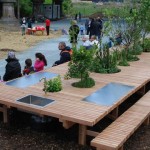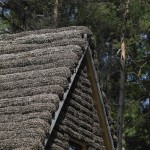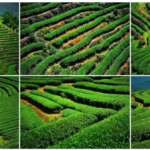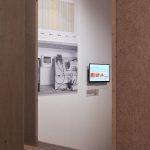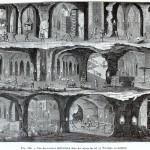Fish fermentation allowed the ancient Romans to store their fish surplus for long periods, in a time when there were no freezers and fishing was bound to fish migratory patterns. [Read more…]
Garum: Fermented Fish Sauce for the Ancient Roman Masses
So you want us all to go back to the Stone Age?
The word “back” is a trick. It implies a magical absolute direction of change. Suppose you go to your job, and when you get ready to leave, your boss says, “So you want to go back to your house? Don’t you know you can never go back? You can only go forward, to working for me even more, ha ha ha!” Really, all motion is forward, and forward motion can go in any direction we choose, including to places we’ve been before.
Ran Prieur in his Critique of Civilization FAQ.
A Trunk on Wheels
Denmark’s Tripl electric motorbike has more cargo space than a Mercedes E-Class estate. The vehicle is aimed at goods delivery in large cities. Heated and refrigerated cargo boxes are available. Some specifications:
- Cargo volume: 750 litres
- Load capacity: 200 kg
- Electric motor: 4 kW
- Top speed: 45 km/h (28 mph)
- Battery: 5.3 kWh / 6.7 kWh / 8 kWh
- Charging time: 5.3 – 8 hours
- Range: 70-100 km (with 8 kWh battery), 50-80 km (6.7 kWh battery), 30-60 km (5.3 kWh battery)
- Weight excl. battery: 221 kg
- Weight with 8 kWh battery: 301 kg
- Length: 241 cm
- Width: 127 cm
- Height: 1170 cm
- Wheelbase: 150 cm
- Turning diameter: 7.5 m
Technology Ages in Reverse
Our society is pathologically enthralled with the new. As scientists and engineers in global development, we’re inculcated starting from very early in our training to seek “the cutting edge” of technological innovation. But if we want the best chance of making a positive difference on the future, that’s the opposite of what we should do.
The reason is that technology ages in reverse. Or put another way, the longer a given technology has been around, the more likely it is to persist into the future. So, if you want your efforts in science to matter in the future, you’d better look to the past to define relevant research questions.
According to philosopher and risk analyst Nassim Taleb, author of Antifragile: Things That Gain from Disorder, while perishable items (such as humans, cats and tomatoes) experience a decline in life expectancy with each passing day, nonperishable things (such as art, literature, ideas and technologies) can experience increased life expectancy the longer they are in circulation. This is known as the Lindy Effect… Taleb asserts that our modern culture trains us to think that the new is always about to overcome the old. But this is just an optical illusion because the failure rate of the new is so much higher than that of the old.
Quoted from: Forget the cutting edge embrace the old tech future, Engineering4Change.
Gravity-Powered Solar Tracker
The SunSaluter is an ultra low-cost, passive, single-axis solar panel rotator (called a tracker) designed for the developing world. Using only the power of gravity and water, the SunSaluter enables a solar panel to follow the sun throughout the day, boosting efficiency by 30% and producing four liters of clean drinking water.
It is 30 times less expensive than conventional motorized solar panel rotators (which use complex electronics), much more reliable, and consumes no electricity itself. With improved efficiency, fewer solar panels are needed, and the overall cost per watt of solar energy is reduced.
The SunSaluter features an adjustable design which allows it to integrate with any solar panel – no special tools needed. The solar panels are mounted on the rotating frame, a weight is suspended from one end, and a special waterclock is suspended from the other. As the water empties and the container gets lighter, the panel slowly rotates. The user can set the rate at which the waterclock empties, which controls the SunSaluter’s rate of rotation.
The SunSaluter also contains a water purifier so that each day it produces four liters of clean drinking water. By combining energy and water collection into one simple device, the SunSaluter improves consistent usage of the purifier, which is the Achilles heel of clean water programs. SunSaluters are available for purchase anywhere in the world as a DIY-kit, or in India as prefabricated systems.
More information: SunSaluter. Via Makeshift, who made a video about the technology.
Knapp Double Wheel Generator
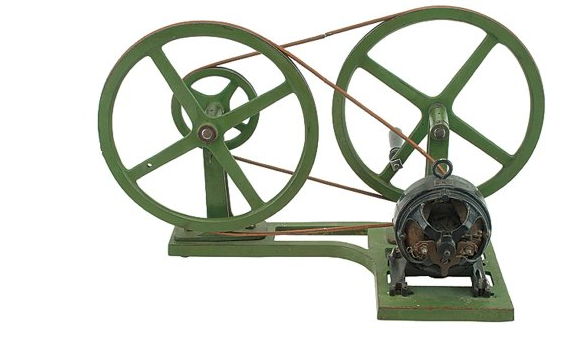 Found at Live Auctioneers. Description: “Painted cast iron original double wheel generator to provide the power to Knapp model trains and trolleys. In talking to various collectors we feel this is the first Knapp toy train generator to have surfaced and it is in near perfect state. The top of the motor sports the Knapp name plate; this piece appears in the 1908 Knapp catalog 16″ l. , 12″ t.” [Read more…]
Found at Live Auctioneers. Description: “Painted cast iron original double wheel generator to provide the power to Knapp model trains and trolleys. In talking to various collectors we feel this is the first Knapp toy train generator to have surfaced and it is in near perfect state. The top of the motor sports the Knapp name plate; this piece appears in the 1908 Knapp catalog 16″ l. , 12″ t.” [Read more…]
